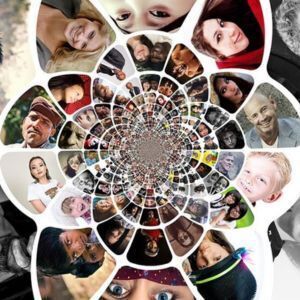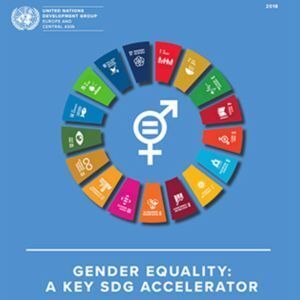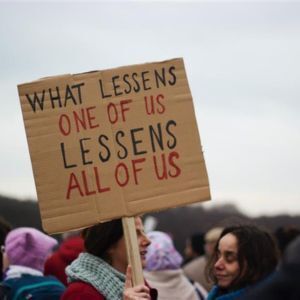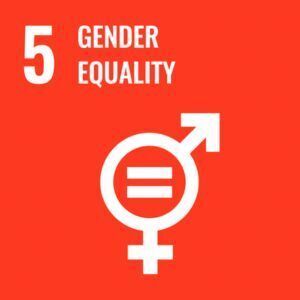Photo by Rangi Siebert on Unsplash
Understanding gender relationships is crucial for fostering equality, respect, and inclusivity in society. Here are some key points to consider:
- Gender is a social construct: Gender refers to the roles, behaviors, and expectations that society assigns to individuals based on their perceived sex. It is important to recognize that gender is not inherently tied to biological sex but is shaped by cultural, social, and historical factors.
- Gender is diverse: Gender is not limited to a binary framework of male and female. It encompasses a spectrum of identities, including but not limited to cisgender (identifying with the sex assigned at birth) and transgender (identifying differently from the sex assigned at birth). Non-binary, genderqueer, and other gender identities exist, highlighting the diversity of human experiences.
- Intersectionality matters: Gender intersects with other aspects of identity, such as race, ethnicity, class, sexuality, and ability. These intersecting identities influence individuals' experiences of privilege or marginalization. Understanding intersectionality is crucial for addressing the unique challenges faced by individuals with multiple marginalized identities.
- Power dynamics and privilege: Gender relationships often involve power dynamics shaped by historical, cultural, and social structures. Patriarchy, for example, has historically privileged men while marginalizing and oppressing women. Recognizing these power imbalances is essential to challenge and dismantle systemic inequalities.
- Consent and autonomy: In healthy gender relationships, consent is crucial. All individuals have the right to make choices about their bodies, sexuality, and personal boundaries. Consent must be enthusiastic, ongoing, and based on clear communication, ensuring that it is freely given and can be withdrawn at any time.
- Gender stereotypes and biases: Society often perpetuates harmful gender stereotypes, which limit individuals' potential and reinforce inequality. Challenging these stereotypes and biases is necessary for creating an inclusive environment where individuals can express themselves authentically and without judgment.
- Communication and empathy: Open and respectful communication is vital in gender relationships. Active listening, empathy, and understanding help create safe spaces for dialogue, foster mutual respect, an d build healthier relationships. It is important to be aware of one's own biases and actively work towards unlearning them.
- Supporting gender equality: Promoting gender equality involves advocating for equal opportunities, rights, and representation for all genders. This includes challenging discriminatory practices, supporting inclusive policies, and amplifying marginalized voices. It is essential to be an ally and actively engage in efforts to dismantle gender-based discrimination.
- Continual learning: Gender relationships and understanding of gender identities are constantly evolving. It is important to engage in ongoing learning, seek diverse perspectives, and stay informed about current issues related to gender. This allows for personal growth and an increased ability to contribute positively to gender equality efforts.
By acknowledging and embracing these principles, we can work towards creating a more equitable and inclusive society that respects and values individuals of all gender identities.
Mission
Promote education and conversational dialogues to support expanding knowledge and gender relationships and partnerships.
Vision
A world where all people are equal.
Goals
When working for gender equity and partnership building are are some key considerations:
- Promote Gender Equality: The overarching goal should be to achieve gender equality, ensuring equal rights, opportunities, and representation for people of all genders.
- Empowerment and Agency: Focus on empowering individuals to exercise agency and make choices about their own lives, bodies, and futures.
- Challenge Gender Stereotypes: Work towards dismantling harmful gender stereotypes and promoting inclusive norms that allow individuals to express themselves authentically.
- Intersectionality: Recognize and address the intersecting forms of discrimination faced by individuals with multiple marginalized identities, including race, class, sexuality, and ability.
- Policy Change: Advocate for policy reforms that promote gender equity and protect individuals from discrimination and violence.
Strategies
- Education and Awareness: Promote education and awareness programs to challenge biases, stereotypes, and misconceptions about gender roles and relationships. This includes initiatives targeting schools, workplaces, communities, and media.
- Empowerment Programs: Develop and support programs that provide skills, resources, and opportunities for marginalized individuals, particularly women and girls, to empower themselves and achieve their full potential.
- Economic Empowerment: Foster economic opportunities and entrepreneurship for all genders, ensuring fair and equal access to resources, financial services, and employment.
- Advocacy and Policy Reform: Engage in advocacy efforts to influence policy changes that address gender inequality, promote gender-responsive legislation, and hold governments accountable for gender-related commitments.
- Collaboration and Partnerships: Foster collaborations and partnerships with diverse stakeholders, including governments, civil society organizations, corporations, and community groups, to leverage resources, share knowledge, and collectively advance gender equity goals.
- Engaging Men and Boys: Promote engagement and education of men and boys as allies in the pursuit of gender equity, challenging harmful masculinity norms and promoting positive, non-violent behaviors.
- Addressing Violence and Discrimination: Develop and support initiatives that combat gender-based violence, including prevention, survivor support, legal reforms, and awareness campaigns.
- Research and Data Collection: Conduct research and data collection to understand the root causes and impacts of gender inequality, inform evidence-based interventions, and monitor progress towards gender equity.
- Media and Cultural Influences: Collaborate with media organizations, content creators, and cultural influencers to promote inclusive and positive portrayals of gender and challenge harmful representations that perpetuate inequality.
- Leadership and Representation: Advocate for increased representation of women and marginalized genders in leadership positions in all sectors, including politics, business, and civil society.
- Evaluation and Accountability:
- Monitoring and Evaluation: Regularly monitor and evaluate the impact of programs and initiatives to assess progress towards gender equity goals and identify areas for improvement.
- Accountability and Reporting: Hold organizations, institutions, and governments accountable for their commitments to gender equity, transparency, and gender-disaggregated data reporting.
- Continuous Learning and Adaptation: Embrace a culture of continuous learning, adaptation, and openness to feedback in order to refine strategies and approaches based on lessons learned.







